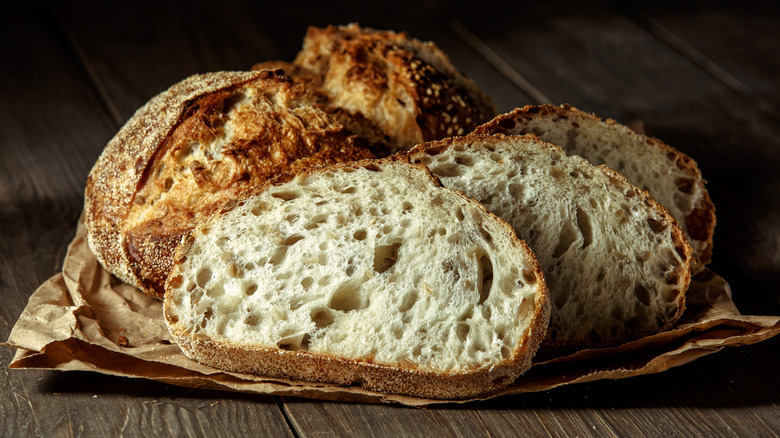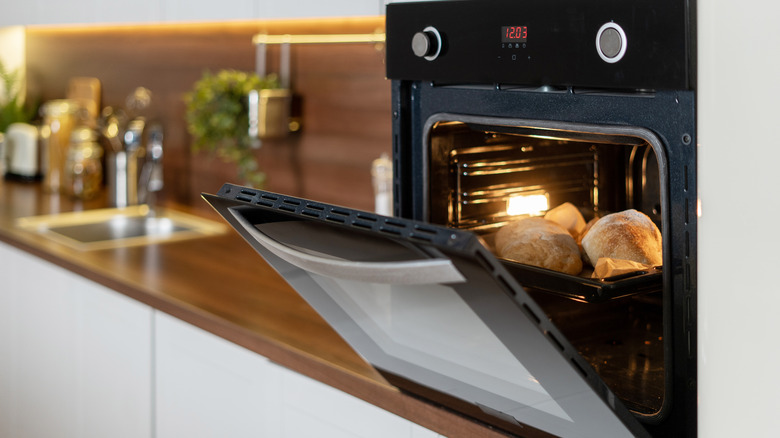The Oven Mistake You're Making With Sourdough
Baking bread is a science and an art form, and there are a lot of bread-making mistakes that are easy to make, so don't feel bad. Sourdough especially takes a lot of patience — as we all found out during the COVID-19 lockdowns. According to Good Housekeeping, a few mistakes people often fall into when making bread are the dough not doubling in size when proofing, the finished bread being too dry and dense, and too many holes appearing in the bread.
Overproofing is another very common mistake, and it happens when the yeast in the dough ferments for too long and turns into too much carbon dioxide (per MasterClass). Because of this, the dough doesn't have any yeast left to rise when it bakes, so it sinks and ends up being a super dense loaf. In terms of sourdough, there are a couple of ways to tell if the dough is over-proofed. If the dough is excessively sticky or stretchy, is flat or caved in, smells like alcohol or beer, or doesn't bounce back after the "poke test," the dough is very likely over-proofed. There is also an oven mistake that's commonly made when making sourdough, and here's how you can avoid it.
Preheat your oven during the dough's final proof for better results
Apollonia Poîlane, the granddaughter of French baker Pierre Poilâne, shares her tips for saving over-proofed sourdough and says a common mistake is waiting for the dough's final proof to be done before preheating the oven (via MasterClass). The extra time it takes waiting for the oven to reach the appropriate temperature increases the chance of the dough over-proofing, leading to dense bread. The ideal proofing environment is from 68 to 77 degrees F with 75 to 85% humidity, which is perfect for allowing the yeast to ferment and also preventing bacteria from forming. Poilâne advises moving the dough to another area if the preheating oven makes the ambient air too warm.
A few things can be done to prevent or salvage over-proofed dough. As long as the dough isn't in its final proof stage, it can be placed in the refrigerator to stop the yeast from growing temporarily. If the dough is past its final proof stage, the very last chance for saving over-proofed sourdough from becoming a dense bread is by carefully and lightly scoring the top. If the sourdough is too over-proofed, there are still some uses for it where the rise doesn't matter. Poilâne suggests using it for the crust of a pizza or flatbread, or save it as part of the sourdough discard and use it to add a tangy flavor to anything from pancakes to pretzels.

